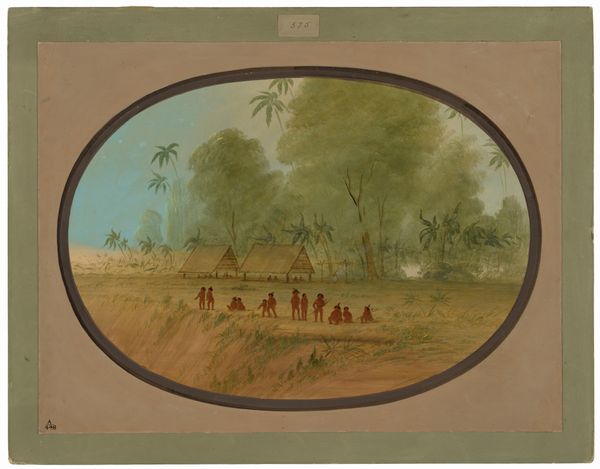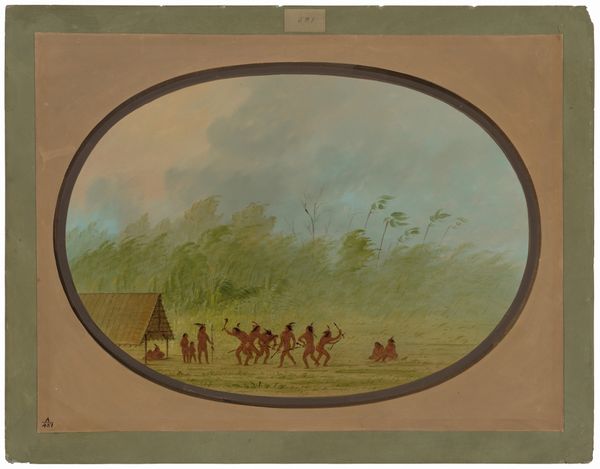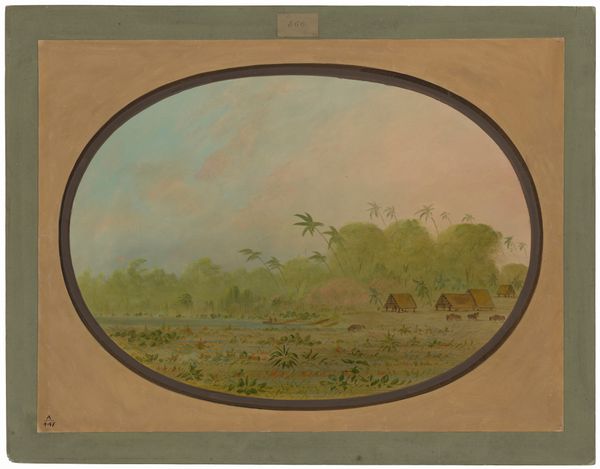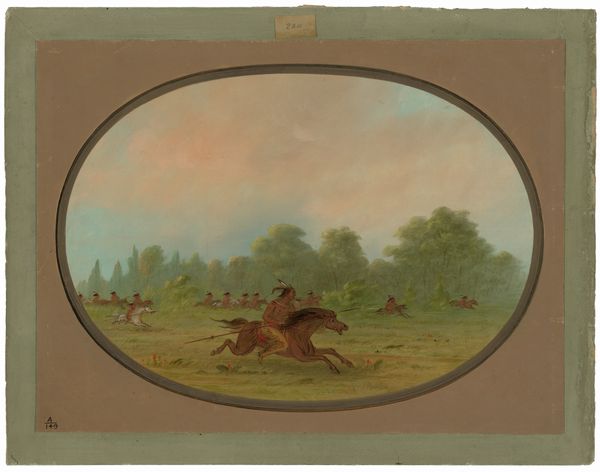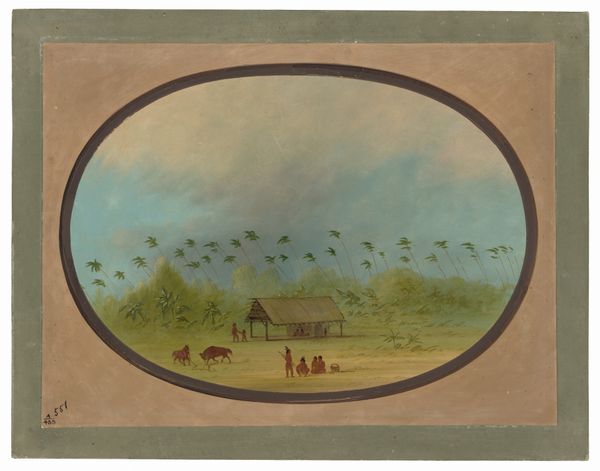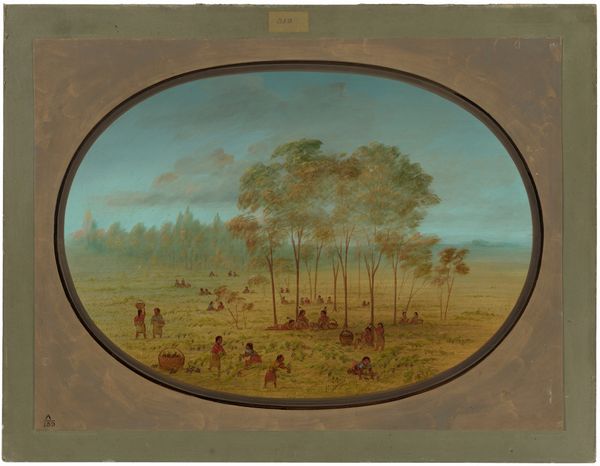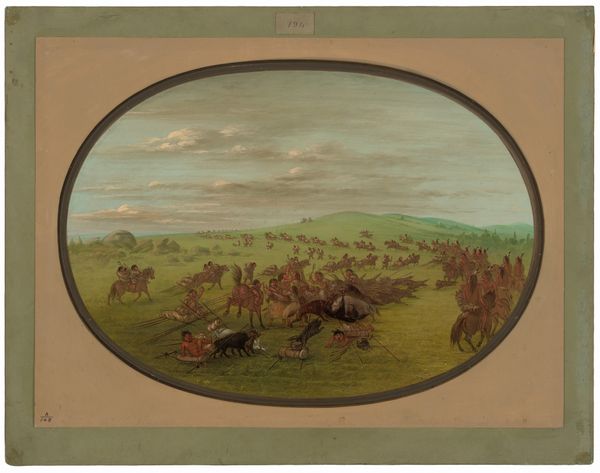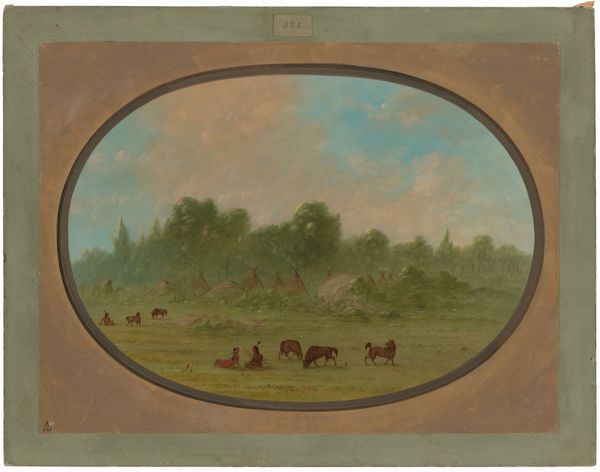
#
water colours
#
handmade artwork painting
#
underpainting
#
painting painterly
#
watercolour bleed
#
watercolour illustration
#
natural palette
#
botanical art
#
watercolor
#
warm toned green
Dimensions: overall: 46.8 x 62.3 cm (18 7/16 x 24 1/2 in.)
Copyright: National Gallery of Art: CC0 1.0
Curator: Look at this watercolor by George Catlin, titled "Indians and Horses in the Forest," created sometime between 1854 and 1869. It really feels like peeking into a hidden world, doesn't it? Editor: It does. My first impression? Tranquility. It has that sort of naive perspective and gentle color palette that makes it look more like a daydream than a depiction of something real. There's a kind of…distance… despite the detailed figures. Curator: That distance, I think, reflects the artistic moment it comes from. Catlin was very invested in documenting indigenous peoples. His paintings aren’t just pictures; they carry a weight of witnessing, recording a vanishing way of life, his work often functioned as a plea for preservation. Note the figures posed carefully—almost like theatrical archetypes set against that almost fairytale backdrop. Editor: Archetypes... I see it. They aren’t really individuals, are they? They are more symbols. The hunter with his bow, the women in conversation... What does that symbolise about how he views their world? Curator: It speaks volumes. Catlin presented a version of “Indianness” – a collection of romanticized types to his predominantly white audience. And what do you see echoed through visual repetition, recurring motifs in composition here? Editor: Hmmm… Well the circle formed by the seated group on the right mimics the round frame itself, doesn’t it? A contained, separate world within a world, you might say? Curator: Precisely. The framing emphasizes a cultural enclave, self-contained and picturesque. And notice how even the watercolor technique itself reinforces that feeling. The slightly bled colours, the softness... Editor: Like a faded photograph, imbuing the past with an unavoidable nostalgia. I wonder if he was aware of that effect or if he believed it would present reality more truthfully? Curator: An interesting question to ask given the context, given how easily it slips into sentimentalization. Perhaps by aestheticizing the image, he sought to heighten its emotional appeal and influence perceptions, but it risks removing the scene further from real existence.. Editor: So we’re left with something beautiful, undoubtedly. But also, undeniably filtered through a very particular gaze. Still, something worthwhile, to examine how our own preconceptions influence our ideas of reality and truth. Curator: Agreed, understanding visual language illuminates the artist's perspective, unveiling not only the subject, but ourselves too.
Comments
No comments
Be the first to comment and join the conversation on the ultimate creative platform.
